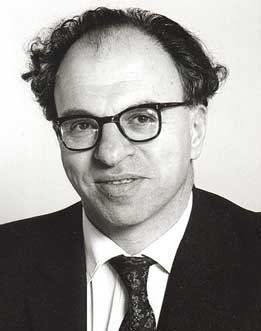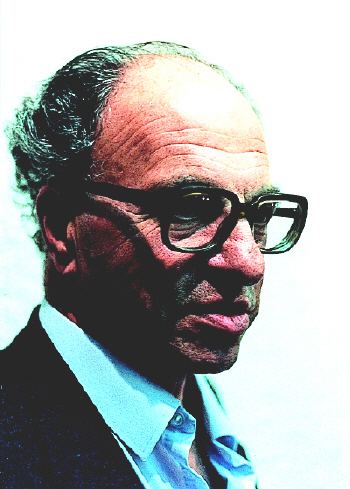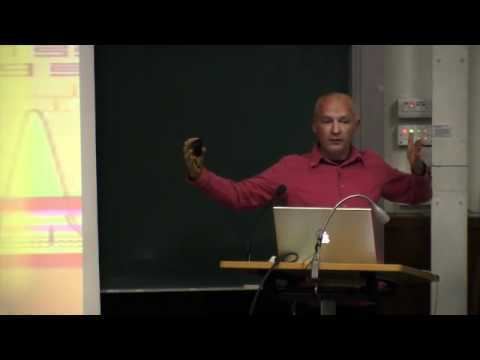Nationality Austrian | Name Hermann Bondi Role Mathematician | |
 | ||
Born 1 November 1919Austria ( 1919-11-01 ) Doctoral advisor Harold JeffreysArthur Eddington Doctoral students Hans-Peter KunzleFelix PiraniRoger Tayler Known for Steady State theorySticky bead argumentBondi accretionBondi k-calculusAtheism Died September 10, 2005, Cambridge Books Relativity and Commonsense Similar People Arthur Eddington, Harold Jeffreys, Harry Messel | ||
Sir hermann bondi lecture secret mathematicians
Sir Hermann Bondi (1 November 1919 – 10 September 2005) was an Anglo-Austrian mathematician and cosmologist.
Contents
- Sir hermann bondi lecture secret mathematicians
- Freeman dyson hermann bondi the adviser 42 157
- Early life
- Career
- Other work
- Personal life
- References
He is best known for developing the Steady State theory of the universe with Fred Hoyle and Thomas Gold as an alternative to the Big Bang theory. He contributed to the theory of general relativity.

Freeman dyson hermann bondi the adviser 42 157
Early life

Bondi was born in Vienna, the son of a medical doctor. He was brought up in Vienna, where he studied at the Realgymnasium. He showed early prodigious ability at mathematics, and was recommended to Arthur Eddington by Abraham Fraenkel. Fraenkel was a distant relation, the only mathematician in the extended family, and Hermann's mother had the foresight to engineer a meeting between her young son and the famous man, knowing that this might be the key to enabling him to follow his wishes and become a mathematician himself. Eddington encouraged him to travel to England to read the mathematical tripos at Trinity College, Cambridge. He arrived in Cambridge in 1937, escaping from anti-semitism in Austria. Realising the perilous position of his parents in 1938, shortly before the Anschluss, he sent them a telegram telling them to leave Austria at once. They managed to reach Switzerland, and later settled in New York.

In the early years of World War II, he was interned on the Isle of Man and in Canada as a friendly enemy alien. Other internees included Thomas Gold and Max Perutz. Bondi and Gold had been released by the end of 1941, and worked with Fred Hoyle on radar at the Admiralty Signals Establishment. He became a British subject in 1946.
Career

Bondi lectured in mathematics at the University of Cambridge from 1945 to 1954. He was a fellow of Trinity 1943-9 and 1952-4
In 1948, Bondi, Hoyle and Gold formulated the Steady State theory, which holds that the universe is constantly expanding but matter is constantly created to form new stars and galaxies to maintain a constant average density. Steady State theory was eclipsed by the rival Big Bang theory with the discovery of the cosmic microwave background (CMB).
Bondi was one of the first to correctly appreciate the nature of gravitational radiation, introducing Bondi radiation coordinates, the Bondi k-calculus, the notions of Bondi mass and Bondi news, and writing review articles. He popularized the sticky bead argument which was said to be originally due, anonymously, to Richard Feynman, for the claim that physically meaningful gravitational radiation is indeed predicted by general relativity, an assertion which was controversial up until about 1955. A 1947 paper revived interest in the Lemaître–Tolman metric, an inhomogeneous, spherically symmetric dust solution (often called the LTB or Lemaître–Tolman–Bondi metric). Bondi also contributed to the theory of accretion of matter from a cloud of gas onto a star or a black hole, working with Raymond Lyttleton and giving his name to "Bondi accretion" and the "Bondi radius".
He became a professor at King's College London in 1954, and was given the title of Emeritus Professor there in 1985. He was secretary of the Royal Astronomical Society from 1956 to 1964.
Other work
Bondi was also active outside the confines of academic lecturing and research. He held many positions:
He became a fellow of the Royal Society in 1959. He made a series of television programs called E=mc2 for the BBC in 1963. He was appointed a Knight Commander of the Bath in 1973. He was awarded the Einstein Society Gold Medal in 1983, the Gold Medal of the Institute of Mathematics and its Applications in 1988, the G.D. Birla International Award for Humanism, and the Gold Medal of the Royal Astronomical Society in 2001. He was awarded an Honorary Degree (Doctor of Science) by the University of Bath in 1974.
His report into the flooding of London in 1953 led eventually to the building of the Thames Barrier. He also supported the proposal for a Severn Barrage to generate electricity, but this project was not carried forward.
His papers from 1940 to 2000 are archived in 109 archive boxes by the Janus Project.
Personal life
His parents were Jewish, but he never "felt the need for religion" and was a lifelong humanist. He was president of the British Humanist Association from 1982 to 1999, and president of the Rationalist Press Association from 1982. He was one of the signers of the Humanist Manifesto.
He married Christine Stockman, also a mathematician and astronomer, in 1947; she had been one of Hoyle's research students and like him she went on to be active in the humanist movement. Together, they had two sons and three daughters, one of whom is Professor Liz Bondi, feminist geographer at the University of Edinburgh. He died in Cambridge in 2005, aged 85. and his ashes were scattered at Anglesey Abbey near Cambridge. Christine died in 2015.
